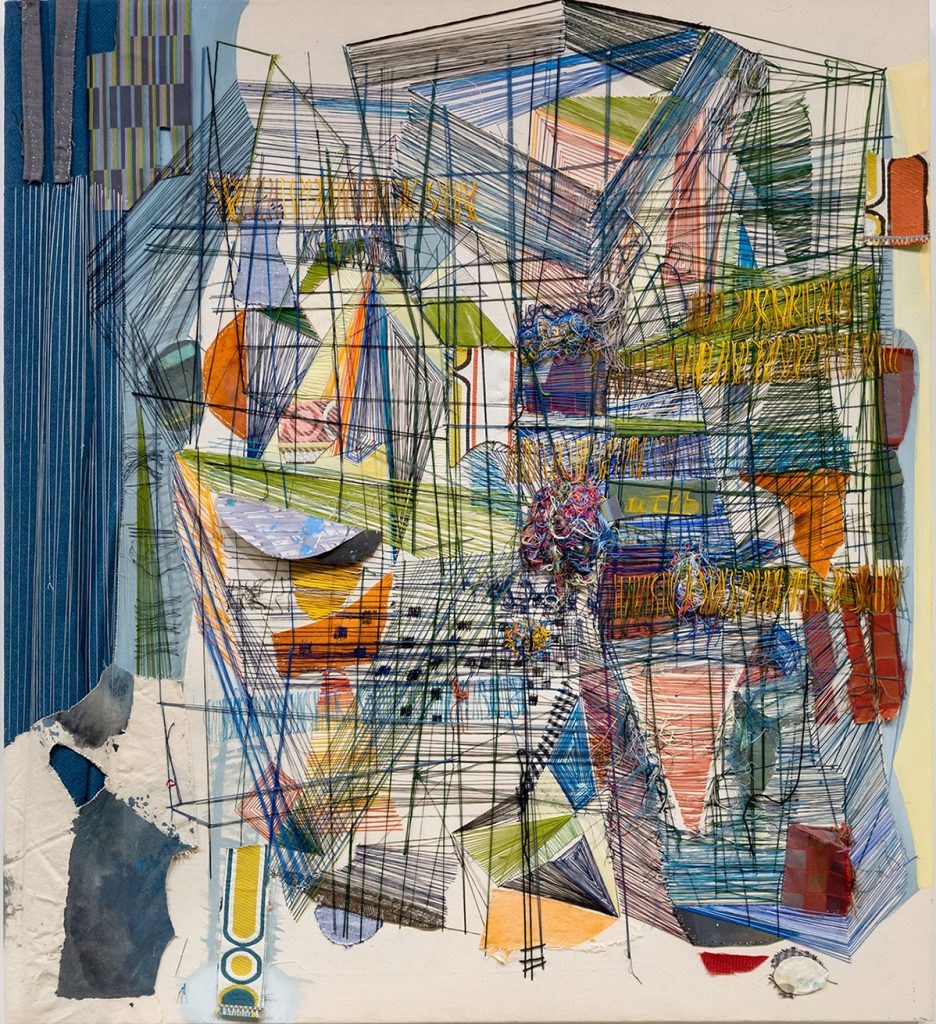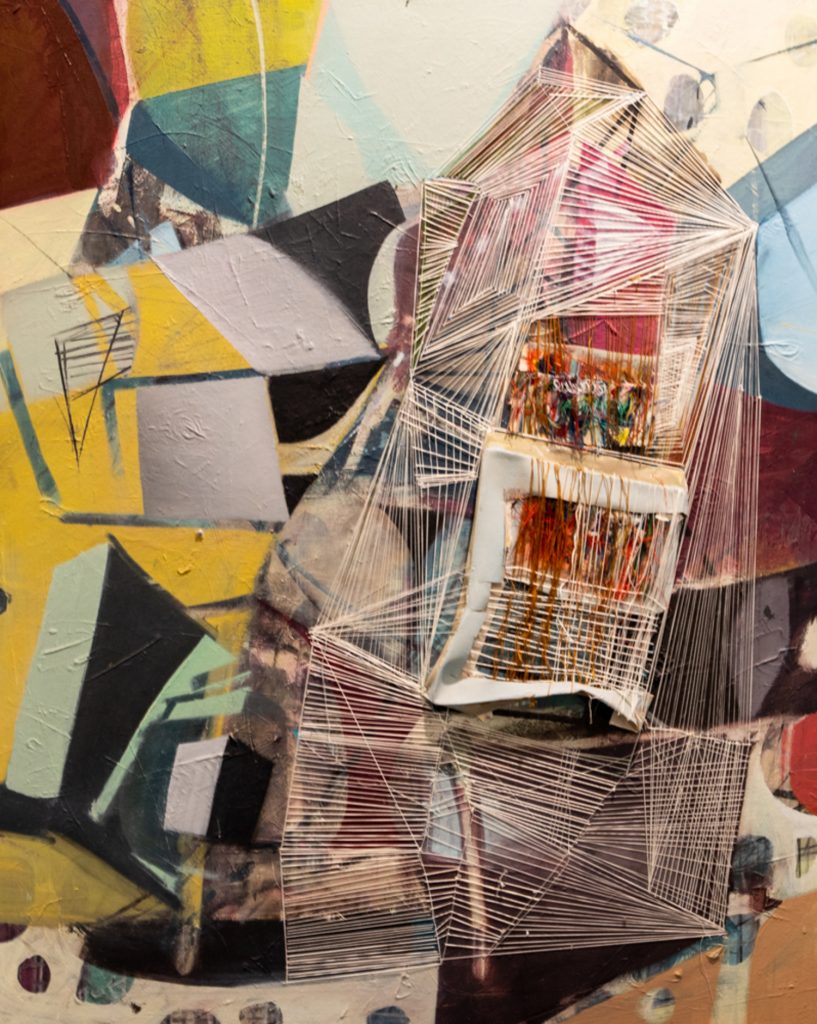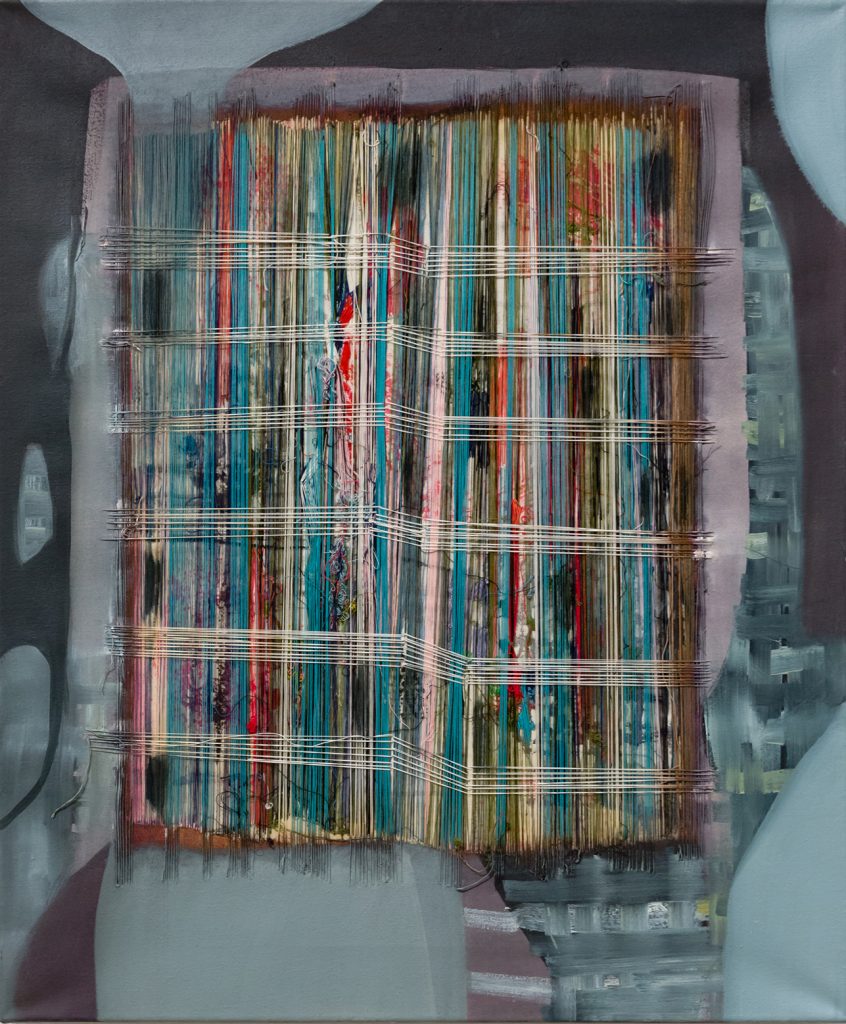by Jonathan Goodman

100 X 90 cm (39.37 X 35.4”)
Of Armenian descent but born in Greece, where she now lives (with regular visits to New York), Eozen Agopian was educated in the United States – at Pratt Institute for her master’s degree and at Hunter College for her bachelor’s of fine arts. Her recent show, expertly curated by the art historian Thalia Vrachopoulos, The Fabric of Space, at the Greek consulate in New York City, enabled visitors to experience her highly worked art, dependent on cloth and thread, nearly as luminous as a Russian icon but also dedicated to the complex vectors and planes of modernist painting. Agopian is an artist of unusual skill, being someone whose textural surfaces are as involved and intricate as embroidery. Her artisanal vision will inevitably tie her to artistic craft, but that term will not do justice to the jewel-like, but completely art-oriented, work she makes so well.

(39.37” X 31.49”)
In Presently (2016), Agopian creates a surface of extreme density, helped by a rectangular set of banded threads that frame two small abstract images. Outside this construction, we see a variety of colored planes–mostly blue, green, and gray–taking up the rest of the space. The density of the image’s architecture is remarkable and creates a space that is of strong interest in its variety of textures. Crowded with forms that fit together like jigsaw puzzle pieces, the composition comes close to exploding beyond the confines established by its frame. Fine art like this relates historically to collage — in particular, the work of Kurt Schwitters, the German founder of merz art. Its impact is derived from the contrast between one form and the next within a relatively small space. This happens on a regular basis in Agopian’s art.
In Nicholas’ Space (2018), the lines take over the entire space of the composition, with forms lending complexity underneath. It feels like an allover composition, with attention being paid to texture. The rhythmic emphasis brought about by the rows of strings also structures the image, which is complex and self-contained. A word of caution might be said about the relentless modernism of Agopian’s vision — some viewers might say the work looks backward too often, relying on a sense of the past that is no longer energetic as an outlook. But this is highly formal work whose manufacture is done so well, we can only marvel at the intricacies of its parts. This is generally true of the artist’s efforts, which are exquisitely put together in ways that remind us of our need to see something well made. As time goes on, and we move further and further away from a sense of craft, Agopian’s art will maintain an integrity that in fact comes from craft, at the same time successfully presenting its high art intentions.

My Departure (2013), the last work to be discussed, consists of thin canvas folded in a vertical fashion, held together by six bands of horizontal, light-colored strings. The colors of the folded, painted canvases give the work a vibrancy that is deeply satisfying. Maybe texture is the true center of Agopian’s focus, which tends to emphasize the exterior of the image–to the point where it takes on the feeling of a sculptural surface. This work, like all of Agopian’s pieces, is self-sufficient in its autonomous abstraction. It communicates feeling as well as highly considered design. This combination of emotion and facture supports our experience of the artist’s thinking, which is original and achieved in the extreme. We live in a time when a kind of manic expressiveness, triumphalist and egotistical, has taken over in art. Such an attitude leads nowhere, although its inherent selfishness may lead to momentary euphoria. But it does not last. The remarkable thing about Agopian’s art is that it is alive to modernism, that is, the recent past, even as its experience leads us ahead, to an esthetic as yet unknown. Thus, we must hope that this show, and Agopian’s art in general, do not go unnoticed, given as the artist is to forging ahead.

Wonderful article with relevant delineation of issues such as craft, formalism and personal expression. I too feel the depth and forward looking energy of Eozen Agopian’s brilliant constructions.